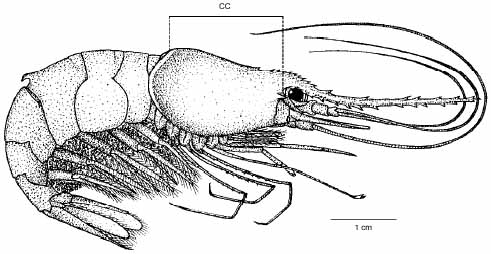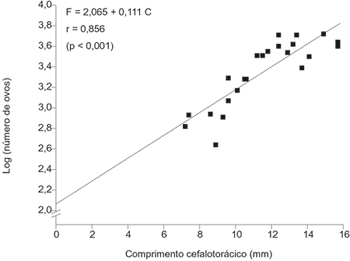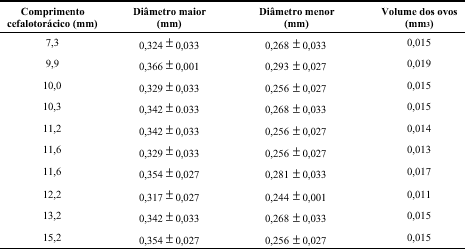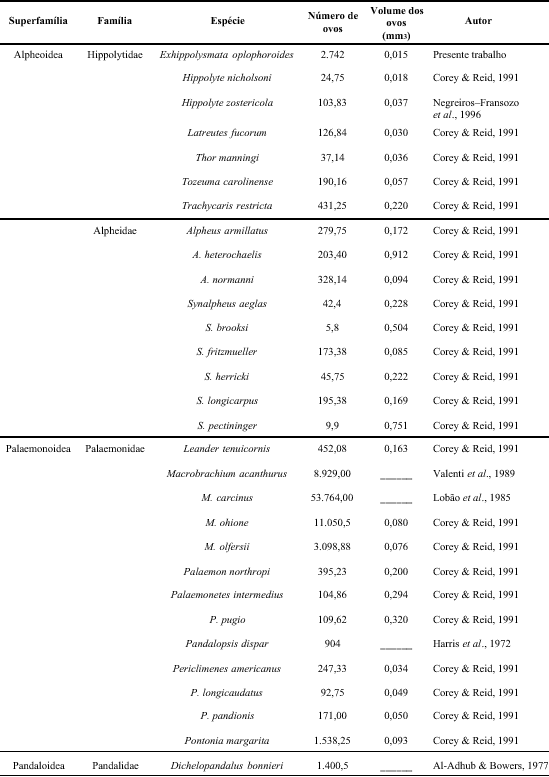The number of eggs and the proportion in which they are produced can provide an indication of the species reproductive potential. The objective of this paper was to get basic data on the general biology of E. oplophoroides and, in particular, its fecundity in the area of Ubatuba (SP). The specimens were collected by trawl in the Ubatuba littoral (23ºS/45ºN) from June/1995 to May/1996. The number of eggs found for each female was plotted against to the cephalothoracic lenght and a linear regression was adjusted. The mean fecundity obtained was 2,742 ± 1,561 which varied from 434 to 5,215 eggs per female per spawn and the mean volume of eggs was 0.015 ± 0.002 mm³. Fecundity increases with the growth of E. oplophoroides females. In the sampled population, it was not found males, suggesting sexual reversion which is very common in marine caridean shrimp. The high percentage of ovigerous females during the whole year confirms the fact of the tropical species present continuous reproduction.
fecundity; Caridea; Hippolytidae








